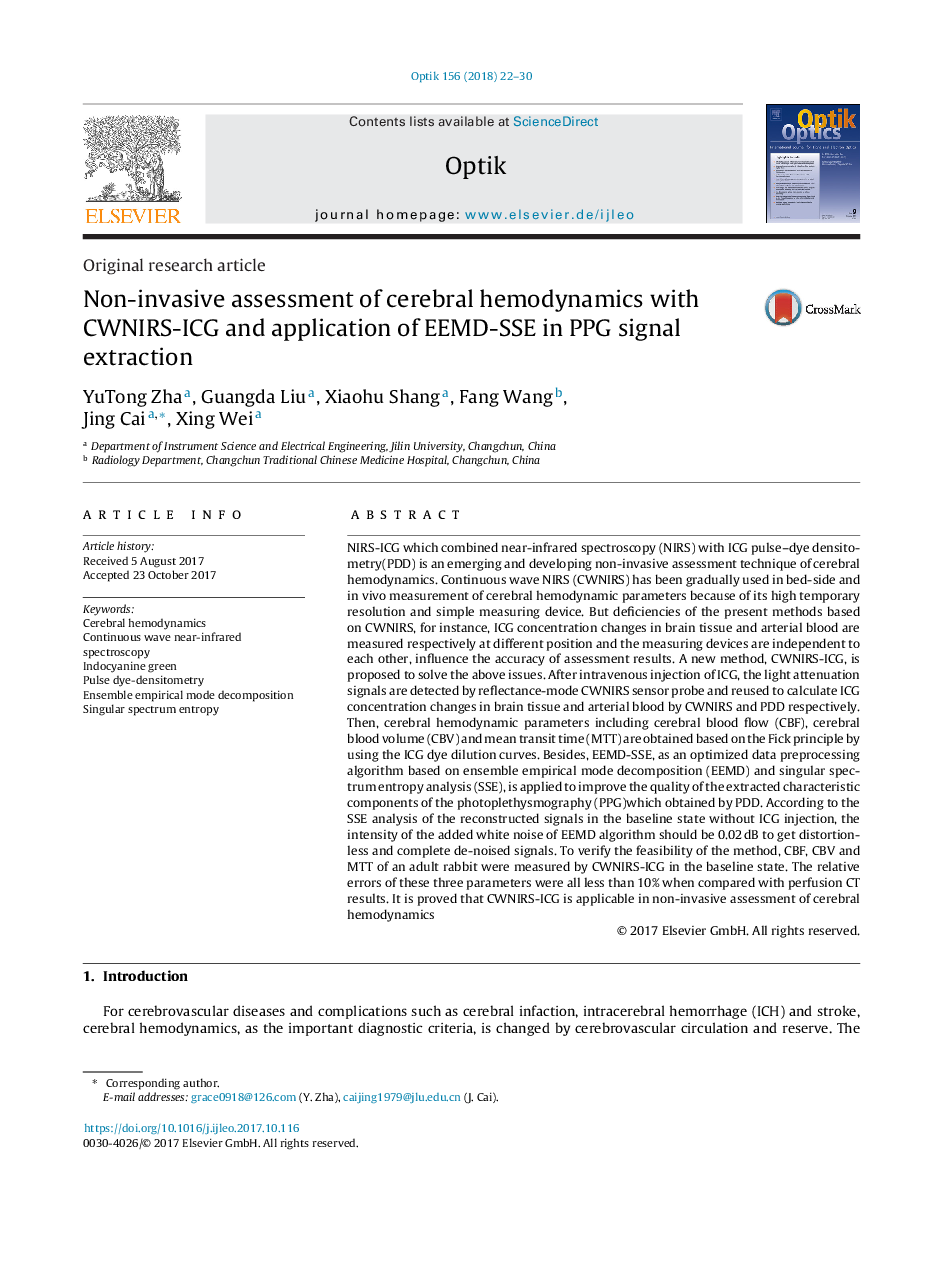| کد مقاله | کد نشریه | سال انتشار | مقاله انگلیسی | نسخه تمام متن |
|---|---|---|---|---|
| 7224831 | 1470571 | 2018 | 9 صفحه PDF | دانلود رایگان |
عنوان انگلیسی مقاله ISI
Non-invasive assessment of cerebral hemodynamics with CWNIRS-ICG and application of EEMD-SSE in PPG signal extraction
دانلود مقاله + سفارش ترجمه
دانلود مقاله ISI انگلیسی
رایگان برای ایرانیان
کلمات کلیدی
موضوعات مرتبط
مهندسی و علوم پایه
سایر رشته های مهندسی
مهندسی (عمومی)
پیش نمایش صفحه اول مقاله

چکیده انگلیسی
NIRS-ICG which combined near-infrared spectroscopy (NIRS) with ICG pulse-dye densitometry(PDD) is an emerging and developing non-invasive assessment technique of cerebral hemodynamics. Continuous wave NIRS (CWNIRS) has been gradually used in bed-side and in vivo measurement of cerebral hemodynamic parameters because of its high temporary resolution and simple measuring device. But deficiencies of the present methods based on CWNIRS, for instance, ICG concentration changes in brain tissue and arterial blood are measured respectively at different position and the measuring devices are independent to each other, influence the accuracy of assessment results. A new method, CWNIRS-ICG, is proposed to solve the above issues. After intravenous injection of ICG, the light attenuation signals are detected by reflectance-mode CWNIRS sensor probe and reused to calculate ICG concentration changes in brain tissue and arterial blood by CWNIRS and PDD respectively. Then, cerebral hemodynamic parameters including cerebral blood flow (CBF), cerebral blood volume (CBV) and mean transit time (MTT) are obtained based on the Fick principle by using the ICG dye dilution curves. Besides, EEMD-SSE, as an optimized data preprocessing algorithm based on ensemble empirical mode decomposition (EEMD) and singular spectrum entropy analysis (SSE), is applied to improve the quality of the extracted characteristic components of the photoplethysmography (PPG)which obtained by PDD. According to the SSE analysis of the reconstructed signals in the baseline state without ICG injection, the intensity of the added white noise of EEMD algorithm should be 0.02Â dB to get distortionless and complete de-noised signals. To verify the feasibility of the method, CBF, CBV and MTT of an adult rabbit were measured by CWNIRS-ICG in the baseline state. The relative errors of these three parameters were all less than 10% when compared with perfusion CT results. It is proved that CWNIRS-ICG is applicable in non-invasive assessment of cerebral hemodynamics
ناشر
Database: Elsevier - ScienceDirect (ساینس دایرکت)
Journal: Optik - Volume 156, March 2018, Pages 22-30
Journal: Optik - Volume 156, March 2018, Pages 22-30
نویسندگان
YuTong Zha, Guangda Liu, Xiaohu Shang, Fang Wang, Jing Cai, Xing Wei,